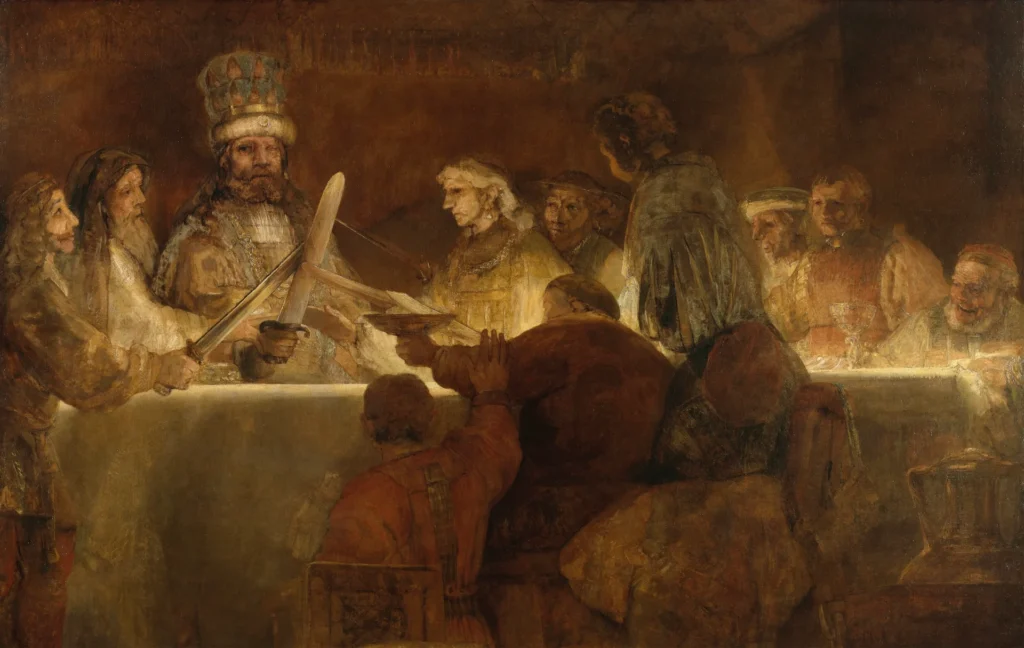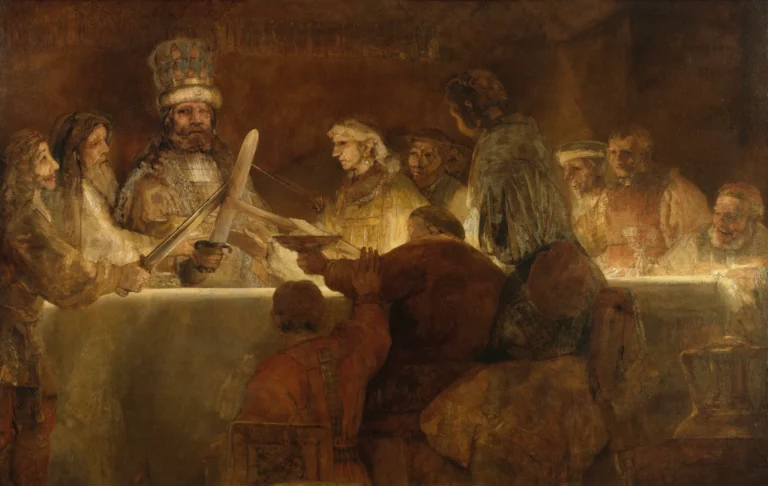The Conspiracy of Claudius Civilis
Created around 1661-1662, The Conspiracy of Claudius Civilis is a remarkable painting by Rembrandt van Rijn that illustrates the Batavian rebellion against Roman rule. Commissioned for the Amsterdam Town Hall, this artwork features Claudius Civilis rallying tribal chiefs under the guise of a banquet, a metaphor for unity and rebellion. The painting's dramatic use of light and shadow exemplifies Rembrandt's Baroque style, while its historical context resonates deeply with the Dutch struggle for independence. Despite its removal from public display shortly after completion, its significance continues to be recognized today.
1661-1662
About the Artwork
Commissioned by the Amsterdam city council, The Conspiracy of Claudius Civilis stems from a desire to celebrate Dutch history through art. The artwork portrays a scene described in Tacitus’s Histories, where the one-eyed leader Claudius Civilis convenes with tribal chiefs in an ancient sacred grove, persuading them to join forces against the might of the Roman Empire. Initially intended as part of a larger series to adorn the new Town Hall, the piece was curtailed in size over time, narrowing its focus to amplify the dramatic scene. The historical backdrop of the painting links it to contemporary notions of Dutch nationalism and rebellion. Although briefly exhibited, its overpowering political implications, symbolized by the crowned figure of Civilis, led to its removal from the Town Hall, but it remains a powerful reflection of resistance and the fight for liberty.
Did You Know
The painting is often viewed as a symbol of the Dutch struggle for independence, referencing the Batavian rebellion as a precursor to the later conflicts against Spanish rule led by figures like William of Orange.
Renowned for his mastery of light and shadow, Rembrandt utilized chiaroscuro to create a dramatic focal point in this piece, enhancing the emotional intensity of the moment captured in the artwork.
Commissioned by the Amsterdam city council for the Town Hall, this work reflects the societal desire to celebrate and remember significant historical events in light of the emerging European identity in the 17th century.










